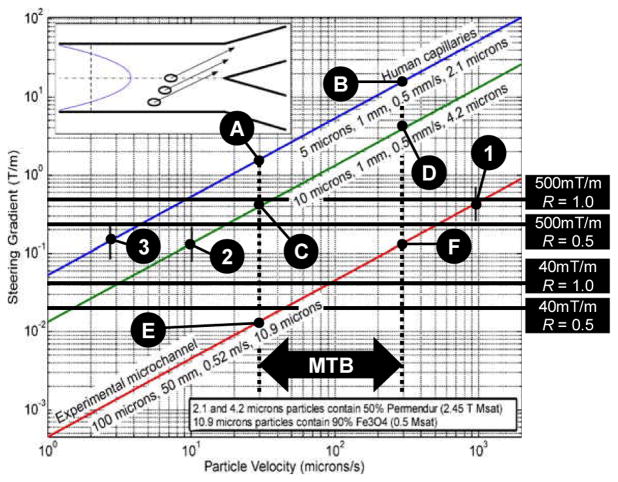Fig. 6.
Results of the three levels of the proposed medical nanorobotic platform - Adapted and upgraded from (Mathieu and Martel 2007). The results show the complementary performance level of each configuration to reach targets through complex microvasculature networks. The data for 2.2μm and 4.2 μm particles with 50% volume Permendur are based on experimental data obtained with particles with a diameter of 10.9μm and 90% volume Magnetite. The graph indicates the diameter of the channel, its length, average velocity of Poiseuille flow from realistic physiological data, and diameter of the particle along each plot for each particle size. Points 1, 2, and 3 show the minimum gradients required for steering the particles at blood vessel bifurcations towards the target while points A through F show initial minimum and maximum velocities of MC-1 MTB-tagged carriers in similar conditions.

